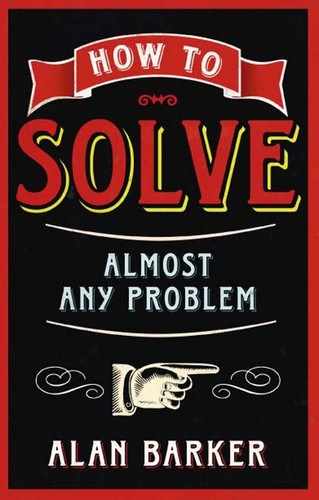Introduction
This is a book about stuckness, and how to escape it.
You know you’ve got a problem when you want to do something but you don’t know what to do. That’s the premise underlying the title of this book. How to solve almost any problem? Really? Well – yes, if we define a problem as a situation in which we’re stuck.
But problems seem to come in so many different shapes and sizes. Deciding what to have for dinner; introducing a new product to market; solving a mathematical equation; saving a marriage: can we really think about all of these problems in the same way? Of course not. But we can approach them using a method that will help us identify how to think about them.
So we need to begin by defining our terms. The first important point is this: the way we solve a problem depends on the quality of the attention we pay to it.
And attention, by definition, focuses our thoughts in a particular direction. Defining our terms is a good way to focus our attention.
It’s not just a question of how much attention we pay to a problem, it’s the kind of attention that matters. Human beings differ from other animals because we can change the way we think about a problem. Scientists call this ability cognitive fluidity. Here’s my second observation: we can think about any problem in more than one way.
And that’s what this book will help you to do: think about problems in different ways.
At the heart of this book is a method that will make your thinking more fluid. I’ve developed the method over a number of years, helping people solve problems in organizations of many kinds. The main focus of my work has been on business problems, but I firmly believe that the method outlined in this book can help us deal with a wide range of problems, from the most personal to the most global. After all, every problem is an event in a human brain, and most human brains work in roughly the same way – more or less.
Surrounding the method, which is at the heart of the book, is a constellation of ideas. (I’ll be investigating and developing some of them in my blog, Distributed Intelligence.) Some of the ideas are mine, but many are the brainchildren of others wiser and more knowledgeable than me. Many of those people are named in the book, but I particularly acknowledge with gratitude the inspiration I’ve taken from the work of Edward de Bono, Jeff Conklin, Mihály Csíkszentmihályi, Stephen Covey, Helga Drummond, Paul Ekman, Tom Flatau, Vanda Forward, Robert Fritz, Howard Gardner, Daniel Goleman, Joe Griffin and Ivan Tyrrell, Daniel Kahnemann, Hank Kahney, Geir Kaufmann, Stephen Mithen, Ulric Neisser, Fred Nickols, Vincent Nolan, Roger van Oech, Tudor Rickards, Tali Sharot, Rachel Thompson and Trevor Young. Oh, and Ray, whose ideas while walking the dogs were always memorable.
This book is for Gill and Imogen.
